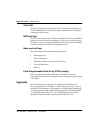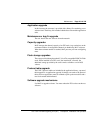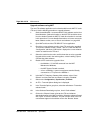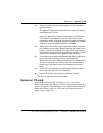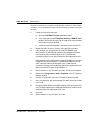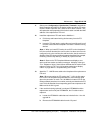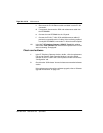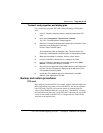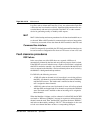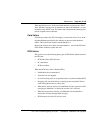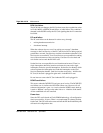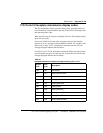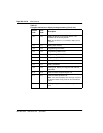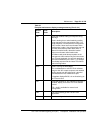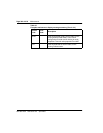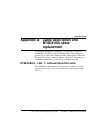
Page 326 of 378 Maintenance
553-3001-202 Standard 1.00 April 2000
Log files, such as Alarm and Trace files, if any, are written to the Flash File
volume and not lost when the card fails. Operational Measurement files are
recorded hourly and need to be uploaded to the MAT PC or other external
device for generating weekly or monthly traffic reports.
MAT
MAT 6.6 has backup and restore procedures for all data downloaded from, or
to, the card. When a MAT terminal is connected to the card, user intervention
is necessary to transmit all lost data from the MAT terminal to the ITG card.
Command line interface
If MAT is temporarily unavailable, the ITG shell command line interface can
be used to retrieve configuration files from an FTP server or from a PC card.
Fault clearance procedures
DSP failure
In the case where one of the DSPs does not respond, a DSP reset is
automatically initiated by the host and an dspResetAttempted alarm is raised.
If the DSP fails to recover after the reset, a dspResetFailed alarm is raised and
that DSP is marked as unusable. Any channels associated with that DSP will
cease to respond to the Meridian 1 and are ultimately taken out of service by
the Meridian 1 background audit procedures.
If a DSP fails, the following can occur:
• A DSP fails when no channel on it is in use (that is, no existing call uses
that DSP). All channels associated with that DSP are marked as DISabled
until the DSP recovers. The leader card is notified so that no incoming
call is assigned to those channels.
• A DSP fails when at least one of its channels is in use. All calls associated
with that DSP are dropped and all its channels are put into the DISabled
state. The leader card is notified so that no incoming call is assigned to
those channels.
When the Meridian 1 initiates a call at a channel of a failed DSP, the DCHIP
card sends a “RELease COMplete” message in response to indicate that the
channel cannot be used. Then, the Meridian 1 generates the alarm “PRI0101”
and locks out the trunk by marking it “BUSY”. This mechanism is also used
to lock out a channel that does not have a corresponding DSP port.



